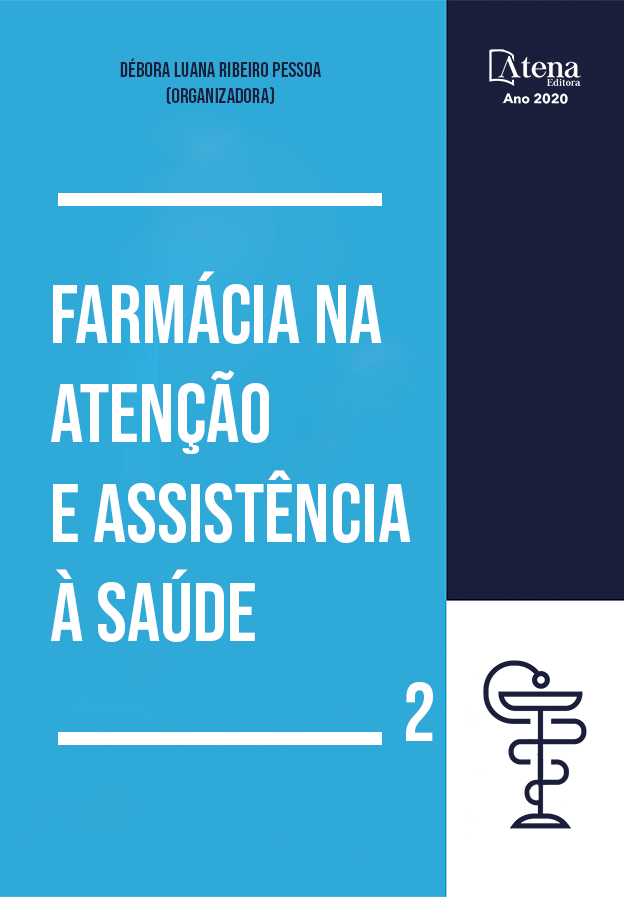
EFEITO DAS SUBSTÂNCIAS DA ASCÍDIA Didemnum perlucidum NO CRESCIMENTO DO TUMOR ASCÍTICO DE EHRLICH
O Câncer é uma das principais patologias que causam mortes no mundo, devido ao conjunto de alterações contínuas no material genético da célula. Ultimamente, animais de origem marinha têm sido explorados devido ao potencial farmacológico. As ascídias são animais marinhos invertebrados sésseis que produzem potentes componentes naturais. Este trabalho avaliou atividade da ascídia Didemnum perlucidum no desenvolvimento do tumor de Ehrlich. Camundongos Swiss receberam 5x106cells, i.p. Os grupos tratados receberam: 1) extrato bruto; 2) fração hexânica; 3) fração diclorometânica; 4) fração aquosa; 5) substâncias polares <50Ǻ; 6) entre 50Ǻ e 90Ǻ; 7) >90Å. O Tratamento foi realizado misturado a ração por sete dias e o desenvolvimento do tumor foi avaliado no oitavo dia do crescimento. O tratamento dos camundongos com o extrato bruto e a fração diclorometânica não alteraram crescimento do tumor; a fração hexânica aumentou e a fração aquosa, que contém as substâncias polares, reduziu o crescimento do tumor em mais de 50%. A subfração contendo as substâncias polares <50Ǻ reduziu o crescimento tumoral de forma semelhante, mas não as substâncias polares entre 50Ǻ e 90Ǻ e >90Å. O tratamento dos animais com a subfração <50Ǻ reduziu o infiltrado leucocitário no sítio tumoral, sendo esta redução devido a diminuição do influxo de células mononucleares e neutrófilos. Com relação aos leucócitos sanguíneos, apenas o número de linfócitos encontra-se reduzido. Por outro lado, o número de células da medula óssea encontra-se aumentado. Os resultados indicam que ascídia D.Perlucidum possui importante ação inibitória sobre o tumor de Ehrlich em modelo in vivo. Esta ação antitumoral da ascídia é desencadeada por substâncias polares menores que 50Ǻ sendo uma ação não citotóxica sobre as células tumorais visto que não causou aplasia de medula óssea, ao contrário, os animais apresentaram aumento no número de células na medula óssea.
EFEITO DAS SUBSTÂNCIAS DA ASCÍDIA Didemnum perlucidum NO CRESCIMENTO DO TUMOR ASCÍTICO DE EHRLICH
-
DOI: 10.22533/at.ed.73720151220
-
Palavras-chave: Ascídia; D. perlucidum; Tumor de Ehrlich; Camundongos.
-
Keywords: Ascidia; D. perlucidum; Ehrlich tumor; Mice.
-
Abstract:
Cancer is one of the main pathologies that causes deaths in the world, due to the set of continuous changes in the genetic material of the cell. Lately, marine animals have been explored, due to their pharmacological potential. The ascidians are sessile marine invertebrate that produce potent natural components. This work evaluated the activity of the ascidians Didemnum perlucidum in the development of Ehrlich’s tumor. Swiss mice received 5x106cells, i.p. The treated groups received:1) crude extract; 2) hexane fraction; 3) dichloromethane fraction; 4) aqueous fraction; 5) polar substances <50Ǻ; 6) between 50Ǻ and 90Ǻ; 7) >90Å. Treatment was mixed with feed for seven days and the development of the tumor was evaluated on the eighth day of growth. The treatment of mice with the crude extract and the dichloromethane fraction did not alter tumor growth; hexane fraction increased and the aqueous fraction, which contains polar substances, reduced tumor growth by more than 50%. The subfraction containing polar substances <50Ǻ reduced tumor growth in a similar way, but not polar substances between 50Ǻ and 90Ǻ and >90Å. The treatment of animals with a subfraction <50Ǻ reduced the number of leukocyte infiltrate at the tumor site, this reduction being due to the decrease in the influx of mononuclear and neutrophil cells. The blood leukocytes of these animals, only the number of lymphocytes are reduced. On the other hand, the number of bone marrow cells is increased. The results indicate that ascidia D.Perlucidum has an important inhibitory action on Ehrlich’s tumor in in vivo model. This antitumor action of ascidia is triggered by polar substances smaller than 50Ǻ, being a non-cytotoxic action on tumor cells, since it did not cause bone marrow aplasia, on the contrary, the animals showed an increase in the number of cells in the bone marrow.
-
Número de páginas: 14
- Katia Naomi Kuroshima
- Laura Menegat
- Phelipe dos Santos Souza
- Giovanna dos Passos
- Ana Angélica Steil
- Jessica Liliane Paz


